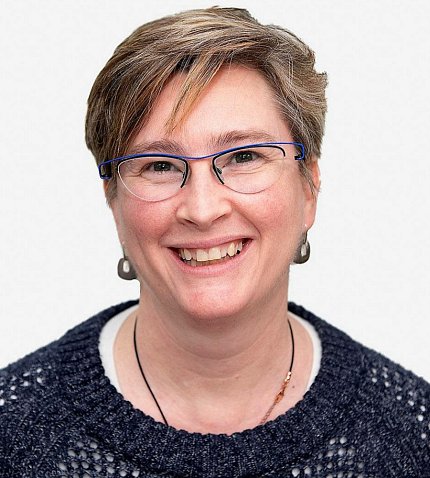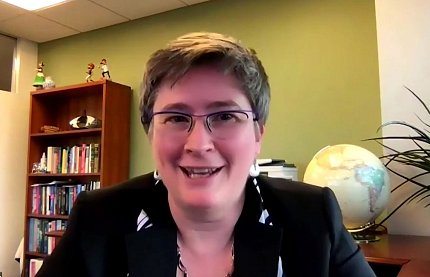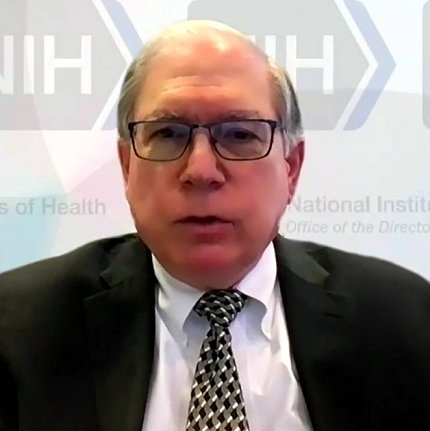NCATS Aims to Transform Rare Disease Research

Photo: NCATS
For patients with a rare disease, it all starts with a diagnosis.
“Getting an accurate diagnosis early, easily and expeditiously is a critical step in bringing the best possible care to people with rare diseases,” said NCATS acting director Dr. Joni Rutter during NIH’s annual observance of Rare Disease Day.
Far too often, however, patients with a rare disease face a “diagnostic odyssey” that lasts, on average, 7 years, Rutter noted. It includes misdiagnoses, inappropriate care and unnecessary tests and procedures.

There are more than 7,000 rare diseases and only 5 percent of them have a treatment, she said. To speed up discoveries, the NCATS-led Platform Vector Gene Therapy (PaVe-GT) seeks to make it easier to start clinical trials by using the same gene delivery system and manufacturing methods for multiple rare disease gene therapies.
NIH worked with industry to launch the Bespoke Gene Therapy Consortium, which is dedicated to making gene therapy a reality for people with genetic diseases affecting populations too small to be viable from a commercial perspective. Additionally, the NIH Common Fund’s Somatic Cell Genome Editing Program is working to improve approaches to help reduce the burden of diseases caused by genetic changes.

“These are all programs that are poised to transform the pipeline for gene-targeted therapies,” Rutter said. “They will bring hope to the 80 percent of rare diseases that are caused by a single-gene mutation.”
All communities must benefit from new diagnostics and therapeutics. “We also have to address the inequities in rare diseases in rural communities and communities of color. That means access to newborn screening, care, treatments—that goes with it,” she said.
Rutter’s mother, Dorothy, was one of the 30 million Americans with a rare disease. Dorothy had primary myelofibrosis, a condition characterized by the buildup of scar tissue in the bone marrow. It took her 15 years to get a diagnosis and, when she was diagnosed, there were no treatments. Eventually, there were clinical trial options, but they were 800 miles away.
“I am dedicated to finding ways to improve all of these factors,” Rutter concluded. “I know I am not alone in that sentiment and that’s what gives me hope.”
Rare Disease Day 2022 featured updates from researchers, stories from patients and their families and panel discussions.
“NIH is proud to be a longtime supporter of rare disease research,” said NIH acting director Dr. Larry Tabak. “Evidence of our commitment can be seen across our research portfolio. It’s reflected, for example, in the depth and breadth of ongoing research to understand genetic diseases.”
Just one example of that commitment is the Rare Diseases Clinical Research Network: 10 institutes and centers, 166 patient advocacy groups, 20 consortia and 1 coordinating center make up the network.
“Through the network consortia, physician scientists and their multidisciplinary teams work together with patient organizations as active research partners to study 181 rare diseases across the nation,” Tabak said.

Gaucher disease is one of the rare diseases being studied by the network, he noted. The disease is a group of inherited metabolic diseases in which harmful amounts of fatty materials accumulate in various cells and tissues in the body. There are several different types of Gaucher disease. They range in severity from lethal to asymptomatic.
Because of the network, multiple institutes and centers can support research that seeks to learn more about Gaucher disease. “A broad scope is needed to truly gain a better understanding of the disorder,” Tabak said.
There are many important lessons rare disease researchers can learn from the Covid-19 pandemic—progress in telemedicine, remote capture and seamless scientific sharing. “Patients, families and practitioners should long benefit from these advances,” he said.

Both Rutter and Tabak thanked former director of the Office of Rare Diseases Research at NCATS Dr. Anne Pariser, who recently retired from federal service, for her contributions to rare disease research.
To watch an archived video of the day’s presentations, visit: https://videocast.nih.gov/watch=44155.

